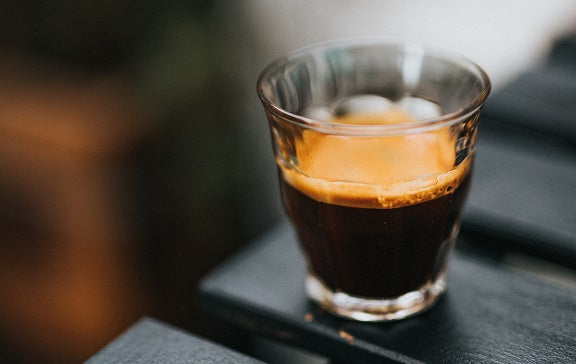Understanding Caffeine Content Across Coffee Types and Brewing Methods
Coffee is known for its energising effects, thanks to caffeine, but have you ever wondered exactly how much caffeine is in your cup? The caffeine content in coffee varies significantly depending on the type of coffee, brewing method, and serving size. In this guide, we’ll explore caffeine levels in different coffee types, how brewing methods influence caffeine content, and how to make informed choices about your caffeine intake.What is Caffeine?
Caffeine is a natural stimulant found in coffee beans, tea leaves, and cocoa beans. It’s what gives coffee its energising qualities, helping us feel more alert and focused. Caffeine is actually the most commonly consumed psychoactive substance in the world, and it works by stimulating the brain and central nervous system. But not all coffee has the same amount of caffeine, which is why some brews pack more punch than others.
Arabica vs. Robusta: Which Has More Caffeine?
The amount of caffeine in your coffee starts with the type of coffee bean. The two main types of coffee beans are Arabica and Robusta, and they contain different amounts of caffeine.
- Arabica Beans: These are known for their smooth, complex flavours and make up about 60-70% of the world’s coffee. Arabica beans have a caffeine content of around 1.5%, making them a bit milder on the caffeine scale.
- Robusta Beans: If you’re looking for a stronger caffeine boost, Robusta beans might be for you. These beans contain roughly 2.7% caffeine, almost twice as much as Arabica, and have a bolder, more bitter taste. Robusta is often used in espresso blends because of its high caffeine content and rich crema.
How Brewing Method Affects Caffeine Content

Your brewing method significantly impacts how much caffeine is extracted. According to a study by de Paula & Farah, at NUPECAFÉ shows caffeine concentrations per 100ml vary widely across methods:
- Espresso: 253.4 mg/100ml
- Turkish Coffee: 166.5 mg/100ml
- Stovetop Coffee: 152.4 mg/100ml
- Cafetiere: 99 mg/100ml
- Cold Brew: 85 mg/100ml
- AeroPress: 78 mg/100ml
- Drip Coffee: 59.8 mg/100ml

Espresso has the highest concentration of caffeine due to its fine grind and high-pressure extraction, which brings more caffeine into your cup. Turkish coffee also packs a strong caffeine punch, as it’s made with finely ground coffee boiled directly in water. Meanwhile, methods like AeroPress and drip coffee yield lower concentrations, making them good options if you prefer a gentler caffeine boost.
Caffeine Content Per Serving by Brewing Method
Because each brewing method has a different typical serving size, it’s helpful to understand caffeine content per serving as well:
| Brewing Method | Typical Serving Size | Caffeine Content Per Serving |
| Espresso | 30ml | 76.2mg |
| Cold Brew | 120ml | 102mg |
| Stove Top | 40ml | 60.96mg |
| Cafetiere | 120ml | 118.8mg |
| AeroPress | 120ml | 93.6mg |
| Drip | 120ml | 71.76mg |
Although espresso has the highest caffeine concentration per 100ml, it’s typically served in small 30ml shots, resulting in a lower caffeine dose per serving compared to larger servings of cafetiere or cold brew coffee.
Do Different Roasts Have Different Caffeine Levels?
A common question is whether light roasts have more caffeine than dark roasts. While roasting changes the flavour and aroma, the caffeine content in coffee beans stays about the same. Light, medium, and dark roast coffees all contain similar amounts of caffeine. So if you enjoy a dark, bold coffee, don’t worry about losing any caffeine compared to a lighter roast.
Decaffeinated Coffee: Is It Truly Caffeine-Free?

Decaf coffee isn’t completely caffeine-free. The amount of caffeine in decaffeinated coffee varies but is typically around 0-7 mg per 8 oz cup. For those sensitive to caffeine, decaf offers a low-caffeine alternative.
Tips for Safe and Healthy Caffeine Consumption
For most people, moderate caffeine consumption is safe and enjoyable. Health experts generally recommend staying under 400 mg of caffeine per day (about 4-5 cups of coffee). Here are some tips to help you manage your caffeine intake:
- Know Your Limits: Listen to your body and adjust your caffeine intake based on how you feel. If you’re sensitive to caffeine, stick to methods with lower caffeine levels, like drip coffee or cold brew.
- Consider Your Brewing Method: Choose a method that matches your caffeine preferences. If you want a strong caffeine hit, opt for espresso or Turkish coffee. For a milder option, try AeroPress or drip coffee.
- Experiment with Serving Sizes: Adjusting your serving size can help you control caffeine levels. A smaller shot of espresso has less caffeine than a full mug of cold brew, even though the concentration is higher.
- Switch to Decaf If Needed: If you’re trying to cut back, decaf coffee is a great option. It still has that delicious coffee flavour without the extra jolt.
How Much Caffeine is Right for You?
The caffeine content in coffee depends on many factors, from the type of coffee bean to the brewing method and serving size. Espresso and Turkish coffee are among the most caffeine-dense options, while drip coffee and AeroPress tend to be gentler. By understanding these differences, you can make informed choices about your coffee routine and enjoy the perfect amount of caffeine in every cup. Whether you prefer a high-energy espresso or a smoother cold brew, there’s a coffee out there with the ideal caffeine content for you.

